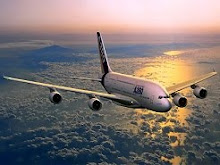Indian (Hindi: इंडियन), formerly Indian Airlines (Hindi: इंडियन एयरलाइंस) is a major Indian airline based in Mumbai and focuses primarily on domestic routes, along with several international services to neighbouring countries in Asia. It is state-owned, and is administered by the Ministry of Civil Aviation. It is one of the two flag carriers of India, the other being Air India.
On 7 December 2005, the airline was rebranded as Indian or इंडियन for advertising purposes as a part of a program to revamp its image in preparation for an initial public offering (IPO).[1] The airline operates closely with Air India, India's national carrier. Alliance Air, a fully-owned subsidiary of Indian, was renamed Air India Regional[2].
In 2007, the Government of India announced that Indian would be merged into Air India. As part of the merger process, a new company called the National Aviation Company of India Limited (NACIL) was established, into which both Air India (along with Air India Express) and Indian (along with Alliance Air) will be merged. Once the merger is complete, the airline - which will be called Air India - will continue to be headquartered in Mumbai and will have a fleet of over 130 aircraft.
The airline is set up under the Air Corporations Act, 1953 with an initial capital of
Seven former freedom domestic airlines, Deccan Airways, Airways India, Bharat Airways, Himalayan Aviation, Kalinga Airlines, Indian National Airways and Air Services of India, were merged to form the new domestic national carrier. Indian Airlines Corporation inherited a fleet of 99 aircraft including 74 Douglas DC-3 Dakotas, 12 Vickers Vikings, 3 Douglas DC-4s and various smaller types from the seven airlines that made it up.
Vickers Viscounts were introduced in 1957 with Fokker F27 Friendships being delivered from 1961. The 1960s also saw Hawker Siddeley HS 748s, manufactured in India by Hindustan Aeronautics Limited, join the fleet.
The jet age began for IAC with the introduction of the pure-jet Sud Aviation Caravelle airliner in 1964, followed by Boeing 737-200s in the early 1970s. April 1976 saw the first three Airbus A300 wide-body jets being introduced. The regional airline, Vayudoot, which had been established in 1981, was later reintegrated.
By 1990, Airbus A320-200s were introduced. The economic liberalisation process initiated by the Government of India in the early 1990s ended Indian Airlines' dominance of India's domestic air transport industry. Indian Airlines faced tough competition from Jet Airways, Air Sahara (now Jet Lite), East-West Airlines, Skyline NEPC, and ModiLuft. As of 2005, Indian Airlines was the second largest airline in India after Jet Airways while Air Sahara controlled 17% of the Indian aviation industry.



No comments:
Post a Comment